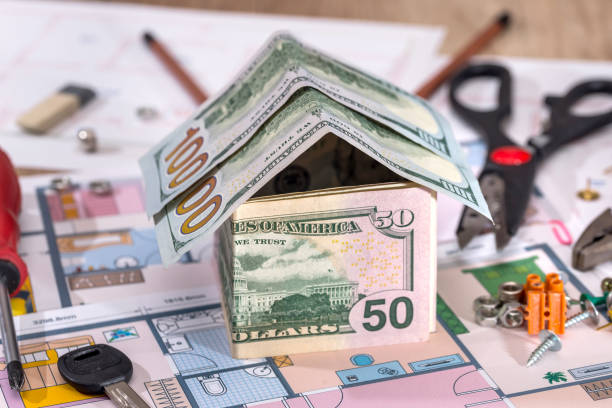As a homeowner in the United States, maintaining and improving your home is a constant responsibility. However, home improvement projects can quickly become costly, especially in today’s economy. Fortunately, there are several strategies you can employ to save money on home renovations without sacrificing quality. In this article, we’ll explore practical money-saving ideas that can help you stretch your home improvement budget further.
Plan Ahead and Set a Realistic Budget
Proper planning is crucial when it comes to saving money on home improvements. Start by making a list of all the projects you want to tackle and prioritize them based on importance and urgency. This will help you focus your efforts and allocate your budget accordingly.
Next, set a realistic budget for each project. Research material costs, labor rates, and any necessary permits or fees in your local area. It’s always wise to overestimate costs to account for unexpected expenses. Once you have a budget, stick to it as closely as possible.
Do It Yourself (DIY)
One of the best ways to save money on home improvements in the U.S. is to do the work yourself (DIY). With the abundance of online resources, including tutorials, forums, and home improvement blogs, many tasks are well within the capabilities of a reasonably handy homeowner.
Projects like painting, tiling, installing laminate flooring, and basic landscaping are often great DIY candidates. Not only will you save on labor costs, but you’ll also gain a sense of pride and accomplishment from completing the work yourself.
However, be realistic about your skill level and the complexity of the project. Some tasks, like electrical work or major plumbing repairs, should be left to licensed professionals to ensure safety and proper installation.
Shop at Home Improvement Stores and Online Marketplaces
Building materials can be a significant expense for any home improvement project. To save money, keep an eye out for discounts and sales at major home improvement retailers like Home Depot, Lowe’s, and Menards.
Many of these stores offer discounts on floor models, slightly damaged items, or overstock inventory. Online marketplaces like Facebook Marketplace, Craigslist, and apps like OfferUp can also yield excellent deals on used or surplus materials from other homeowners or contractors.
When shopping for discounted materials, inspect them thoroughly for any defects or damage that could compromise their functionality or safety.
Repurpose and Refinish Existing Items

Instead of replacing items outright, consider repurposing or refinishing what you already have. This approach can save you a significant amount of money while also reducing waste.
For example, instead of buying new kitchen cabinets, you could refinish or reface your existing cabinets with a fresh coat of paint or new hardware. Or, rather than installing a brand-new bathroom vanity, you could refinish the existing one or swap out the countertop for a more affordable material like laminate or butcher block.
Repurposing old furniture or materials into new pieces can also be a cost-effective way to add character and unique touches to your home.
Hire Contractors Strategically
While some home improvement tasks are well-suited for DIY, others may require the expertise of a professional contractor. When hiring tradespeople, take the time to get multiple quotes and thoroughly vet their credentials, references, and online reviews.
Don’t automatically go with the lowest bid, as that could be an indication of subpar work or hidden costs. Instead, look for contractors who offer fair and transparent pricing, and who have a solid reputation for quality work in your local area.
You can also save money by hiring contractors during their off-season or negotiating better rates for larger projects.
Prioritize High-Impact, Low-Cost Projects
When working with a limited budget, it’s essential to prioritize home improvement projects that offer the most significant impact for the least amount of money. These projects can often provide a fresh, updated look without breaking the bank.
Some high-impact, low-cost projects to consider in the U.S. include:
- Painting: A fresh coat of paint can completely transform a room’s appearance and is a relatively inexpensive project.
- Updating light fixtures: Swapping out outdated light fixtures for modern, energy-efficient options from retailers like Lowe’s or Home Depot can instantly uplift a space.
- Replacing hardware: New cabinet handles, door knobs, and other hardware from hardware stores can give a fresh look to existing fixtures.
- Landscaping: Simple landscaping projects, like planting flowers or adding mulch from home improvement stores, can enhance your home’s curb appeal.
- Organizing and decluttering: Sometimes, all a space needs is a good decluttering and reorganization to feel refreshed.
By focusing on these types of projects, you can achieve a significant visual impact without investing heavily in major renovations.
Leverage Energy-Efficient Upgrades and Tax Credits
While some energy-efficient upgrades, like solar panels or new windows, can be costly upfront investments, they can save you money in the long run through reduced utility bills. Many of these upgrades also qualify for federal tax credits or local rebates in the U.S., further offsetting the initial cost.
Consider upgrades like:
- Insulation: Improving your home’s insulation can significantly reduce heating and cooling costs, especially in extreme climates.
- Energy-efficient appliances: Look for Energy Star-certified appliances from major retailers, which use less energy and water than standard models.
- Smart thermostats: These devices can automatically adjust your home’s temperature based on your schedule and preferences, reducing energy waste.
- Low-flow faucets and showerheads: These fixtures can cut your water consumption and water heating costs.
While the upfront costs of these upgrades may seem daunting, the long-term savings on your utility bills, combined with potential tax credits and rebates, can make them worthwhile investments.
Home improvements don’t have to break the bank for homeowners in the United States. By planning ahead, doing some of the work yourself, shopping for discounts at home improvement stores and online marketplaces, repurposing materials, hiring contractors strategically, prioritizing high-impact projects, and investing in energy-efficient upgrades, you can save a significant amount of money while still enhancing the value and livability of your home.



Leave a Reply